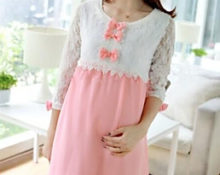A shirt dress is a universal clothing option and suits absolutely all women, regardless of style, age and build. These are clothes that no fashionista can do without. Let's take a closer look at the features of this dress, as well as one of the options for constructing a drawing.

Making a pattern
The product can be worn with or without a belt. The proposed pattern is one of the most difficult to complete, but the result is worth it. It is better to take the pattern of the basic dress as a basis. Next, perform the following sequence of actions:
- We start modeling from the back. It is necessary to create a yoke pattern. To do this, lower it down to 12 cm from the neckline and draw a horizontal line.
- We measure up to 1.5 cm from the armhole line down to round the previously drawn line.
- Next, measure the pre-designated length of the product.
- To round the bottom line on the sides, set aside up to 10 cm and connect the resulting marks.
- Then he proceeds to the front part: it is necessary to transfer the dart on the chest to the side seam.
- We build a drawing of a strip for buttons or buttons. To do this, set aside 1/2 of the width of the plank to the right in the figure.
- Next, we put exactly the same number from the center front to the left.
- Then we determine the border of the bottom of the front: it can be equal to the size of the back or be smaller, depending on the style and personal preferences of the master.
- For the base of the sleeve, take an element from the basic dress model. If desired, it can also be modeled.
- We draw a collar with a cut-off stand. It is identical to the collar pattern for a women's shirt.
- To build a stalemate, draw a rectangle with dimensions equal to the length and width of the stalemate. One of the sides should look like an arrow in width.
- Patches on the sleeves are constructed in a similar way. The only difference is the length: it is about 25 cm. Later they are attached from the inside, just above the elbow joint, so that it is convenient to fasten the button.
- We use a rectangle measuring 4x200 cm as a belt.
- If desired, you can make chest pockets.

Attention! Based on the classic cut, the model can be modernized. It can be either a voluminous dress or a fitted one, with or without pockets, with slits, with long or short sleeves, etc.
By far the easiest way is to make a pattern based on a men's shirt. The product can be simply decorated. For example, you can partially cut off the shoulders and make inserts from lace or mesh, add rhinestones and sequins. A sewn-in elastic belt will help emphasize the femininity of the look.
Advantages of a shirt dress
The shirt dress is very popular and is an essential part of any fashion show. Every season, famous fashion designers strive to bring something new and interesting to the traditional form. Let's look at the main features and advantages of this dress:
- It can be both an everyday wardrobe option and a festive one. It is relevant for any occasion: for work, study, leisure.
- The same dress can be worn in different ways. After wearing a simple wide dress with a spectacular belt and bright jewelry, you can safely go to a party.
- There are no strict restrictions on the materials used for sewing. Fabrics are selected depending on seasonality and taste preferences.
-

The model is comfortable for constant wearing, provides freedom of movement and comfort. - A wide shirt dress is an ideal option for pregnant and overweight girls. It helps to hide figure flaws and highlight advantages.
- Suitable for any style. The main thing is to understand the trends and find the right combination with accessories and shoes.
Important! You can never part with your favorite shirt dress even in winter. After all, you can always keep warm by wearing a knitted sweatshirt, tights or leggings underneath.
Having a shirt-style dress in your wardrobe, you can create various looks, wear it as a separate item of clothing, or in combination with trousers, jeans and leggings. We hope that this article will inspire you to create an interesting model with your own hands.



 0
0





